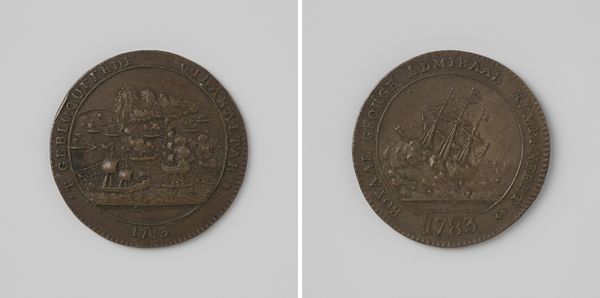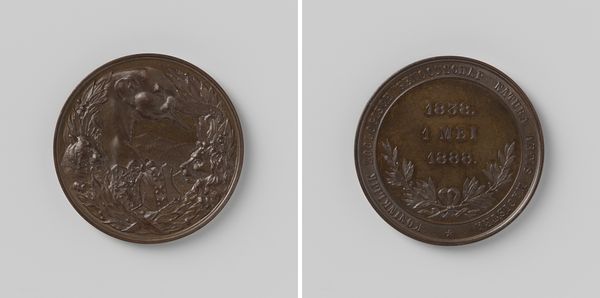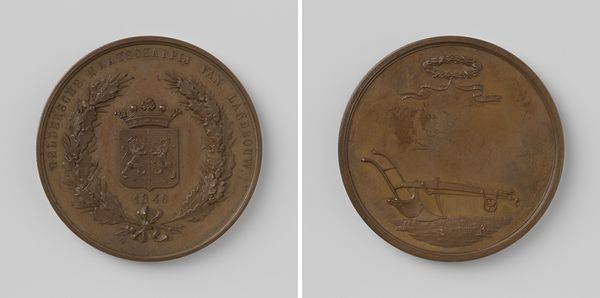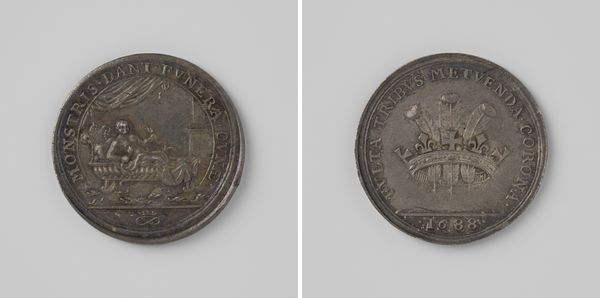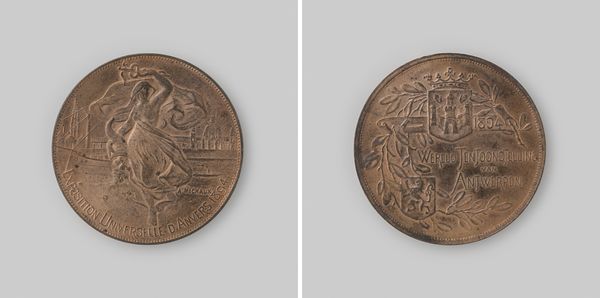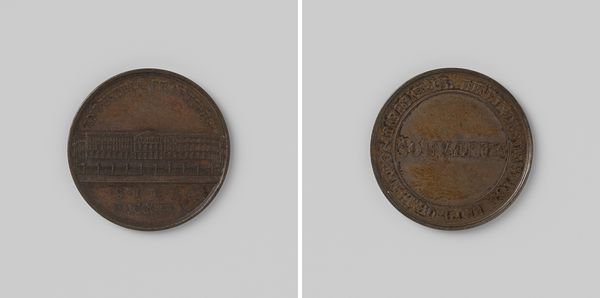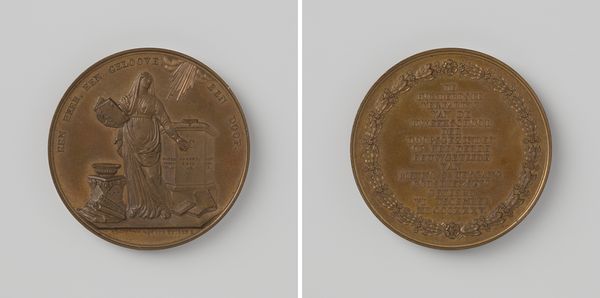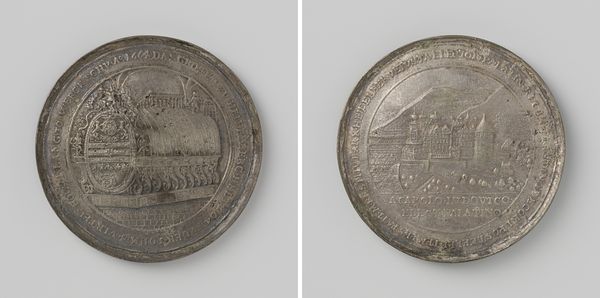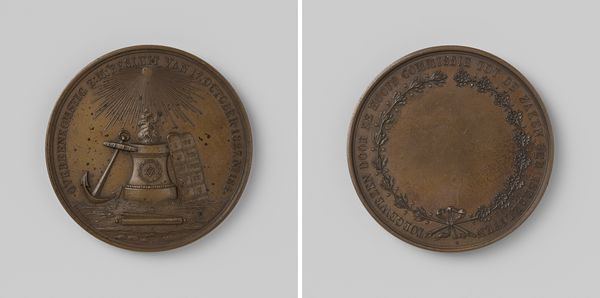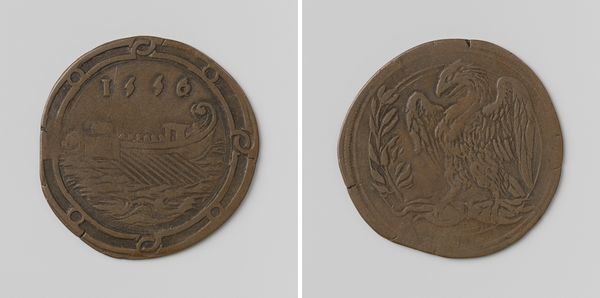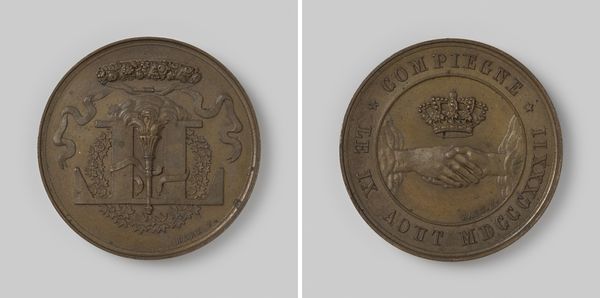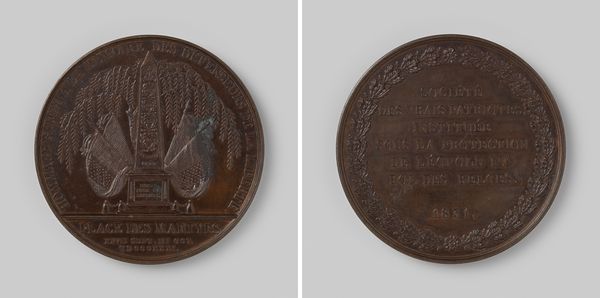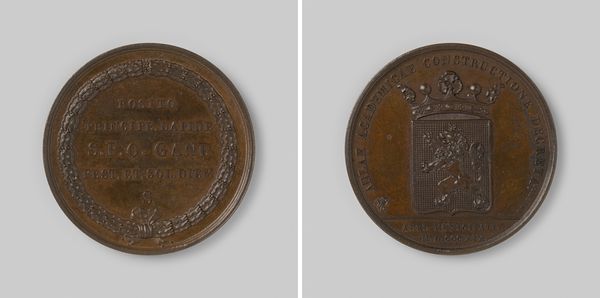
Award of the Massachusetts Humane Society 19th century
0:00
0:00
relief, bronze
#
relief
#
bronze
#
ancient-mediterranean
#
decorative-art
Dimensions: Diam. 2 1/4 in. (57 mm.)
Copyright: Public Domain
Curator: This bronze relief is the "Award of the Massachusetts Humane Society," dating from the 19th century, crafted by Benjamin Wyon. It resides here at the Metropolitan Museum of Art. Editor: My initial response is it's a dense and rather stoic piece. There’s a sense of heavy symbolism and perhaps a certain rigidity in its design, typical for institutional heraldry. Curator: Indeed. The piece operates within established visual traditions for conveying authority and purpose. Note how the central shield presents segmented imagery—lifeboats, clasped hands, a ship in distress. Editor: It feels a little…paternalistic, right? This notion of 'humanity' being directed from a position of power. I see a 'refuge' motif represented as a sturdy, self-contained house elevated above the rest of the emblem, and it gives me pause. It raises questions about who gets to offer 'refuge', and on what terms. Curator: The Massachusetts Humane Society played a key role in maritime rescue and establishing aid stations along the coast. This object circulated within elite social circles, acknowledging significant acts of bravery or philanthropy connected to this social program. Editor: I'm struck by the material too—bronze, of course. A metal that historically evokes power, permanence, even a kind of timeless authority. That deepens the narrative. This wasn't designed to be a fleeting gesture of kindness; it’s an enduring symbol. Curator: The relief technique emphasizes the visual hierarchy, the clarity of each symbolic zone, and it's certainly designed to last. You see the influence of classical and neo-classical designs—a trend in 19th-century commemorative objects. Editor: Yes, all those elements add up to its particular ideological statement. A rigid and perhaps slightly detached presentation of the complex issue of humanity. Curator: It prompts reflection on the changing roles of social organizations over time and how ideas around assistance evolve. It really represents an intersection of social class and governance. Editor: Exactly, which brings us to understanding not only the history OF the piece, but the social implications inherent to the time and location of creation. It tells as much about the organization as it does about humanity.
Comments
No comments
Be the first to comment and join the conversation on the ultimate creative platform.
